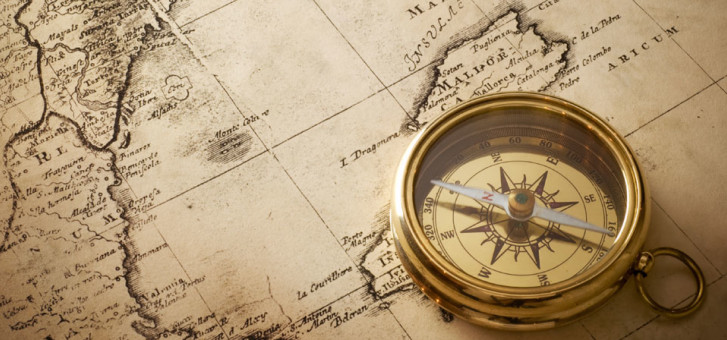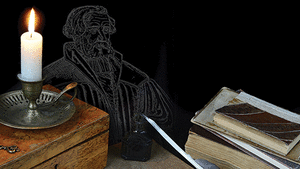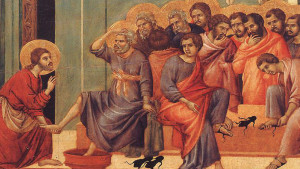What if you could escape to a deserted island and find God? Harold Harker leads us to just such a place.
It is called “The Holy Island.” The reason? Because on this remote Greek island—the northern-most of the Dodeconese Group—the apostle John, the disciple of Jesus, spent some of his final years as a prisoner, receiving visions, which he recorded as the apocalyptic book of Revelation.
Today tourist ships anchor in the deep blue waters of the harbour of Skala. Like other Greek isles, it has dazzling white buildings, often cube or block-like in style. Houses cling to the rocky hills that radiate outwards from the village of Hora, the highest of which point like fingers of a bony hand. Its 34-squarekilometres include sandy beaches where the azure water seems to indicate heaven came close to this part of the world.
The Monastery of St John at Hora has been a pilgrimage site for many years.
Ancient circular windmills were built near the monastery, but today are without their sails or even arms. Tourists are reminded of the atmosphere of the island when visiting beaches by notices declaring that nude or topless bathing is not permitted on the island.
While Patmos is around 250 km in a direct line from Piraeus, the main port of Athens, it's less than 100 km from Turkey. The 3000 or so inhabitants who live on this island are reliant on Greek shipping and ferries for contact with the outside world.
Just how did this remote island acquire its the “holy island” tag? The story is almost 2000 years old.
When Jesus was dying on the cross, He charged John, the youngest of the disciples, with the care of Mary, His mother.
So when the disciples in Jerusalem were dispersed by persecution, John possibly took Mary with him to Ephesus, in modern- day Turkey. It is a short distance east from Patmos, on the mainland.
John became the leader of the church in Ephesus. Today, the throngs of visitors and tourists visit this beautifully restored, ancient city. Nearby was one of the wonders of the ancient world, the great Temple of Artemis. Once four times the size of the Parthenon in Athens, today only one of its former 117 columns stands.
Goths destroyed it in 260 AD. Just above this fantastic historical site, near the village of Selcuk, is the ruin of the large Basilica of St John.
It is above ancient Ephesus, where, t4raditions says, Mary was laid to rest.
John was going about his work in Ephesus, teaching about Jesus' ressurection and leading in worship, when, during a wave of persecution around 95 AD, he was arrested and set to Rome for trial.
There, incurring the displeasure of the Emperor Domitian, John was thrown into a vat of boiling oil, but when it failed to kill him, he was banished to Patmos, where he is alleged to have spent some 16 months, during which time hw wrote Revelation, the last book of the Bible.
One of the other historically interesting places on the island is the Monastery of the Apocalypse, located halfway up the hill above the port town of Skala and the Monastery at Hora. The monastery has been built over a cave where John is reputedly to have received his visions. Cacks in the rock of the ceiling of the cave are said by the monks to represent the Trinity - the Father, Son and Holy Spirit.
It is interesting that John, writing the book of Revelationm states, "I, John, your brother and companion in the suffering and kingdom in Jesus, was on the island of Patmons because of the word of God and the testimony of Jesus" (Revelation 1:9). Here John states that he was a prisoner because of teaching the "Word of God." Being a faithful preacher of the "good news" of Jesus had its downside.
The phrase "testimony of Jesus" is used here and at the beginning of the first chapter to indicate that he was used by God to communicate messages from heaven.
no wonder the island of Patmos is called a "holy island"! The God of the universe eas communication messaes of hope and encouragement and the ultimate triumph of love and goodness over evil and darkness.
The message John sent from Patmos confirms that God communicates with the human race through His prophets, as Peter clearly states: "We have the word of the prophets made more certain, and you will do well to pay attention to it" (2 Peter 1:19).
The island of Patmos, while today a tourist destination, is a reminder that the God of heaven uses people to share His desires with us. But as Peter states, "prophecy never had its origin in the will of man, but men spoke from Fod as they were carried along by the Holy Spirit" (2 Peter 1:21). This agrees of course with the apostle Paul who says "all Scripture is God-breathed" (2 Timothy 3:16)
From Patmos John writes to tell us of the coming of the "King of kinds and Lord of lords." He shares the history of the church - not just the seven churches mentioned in Revelation, but the ulitmate triumph of those who obey and follow Jesus, and the destruction of those who oppose Him.
Like Patmos, the book of Revelation has a lot to offfer. And while Patmos is interesting as a tourist destination, Revelation pictures in clear detail that a future life with Jesus is far more thrilling and never ends. It is up to each of us to decide which of the two we will explore.






